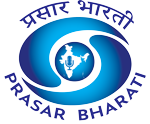India marked National Press Day 2025 with a renewed focus on safeguarding press freedom and strengthening the institutions that uphold it. The day highlights the essential role of a free and responsible press in democracy, and this year the government reaffirmed that “a free and responsible media remains one of the strongest pillars of our democracy,” underscoring its commitment to ethical journalism and public awareness.
The roots of National Press Day trace back to 1966 with the establishment of the Press Council of India (PCI) under the Indian Press Council Act. Over time, the PCI has evolved into a key guardian of journalistic ethics, handling complaints related to press freedom, attacks on journalists, and professional conduct. It has also taken proactive steps, including guidelines for reporting on natural disasters and initiatives promoting fair representation of marginalized communities.
India’s media landscape has expanded enormously, with registered publications rising from 60,143 in 2004–05 to 1.54 lakh in 2024–25. This growth has been supported by major reforms such as the Press and Registration of Periodicals (PRP) Act, 2023, which replaced the colonial-era law and introduced a modern, digital regulatory framework. The Act also reconstituted the Registrar of Newspapers for India as the Press Registrar General of India (PRGI), creating a streamlined and contemporary system.
A key milestone in this reform journey is the Press Sewa Portal, which has fully digitized the registration process. In just six months, 40,000 publishers have been onboarded, 37,000 annual statements filed, and 3,000 printing presses registered. Features like e-signing, QR-enabled certificates, direct payment options, and a chatbot-based support system have made registration transparent, efficient, and user-friendly, reducing compliance burdens and supporting ease of doing business.
Capacity-building remains a priority, led by the Indian Institute of Mass Communication (IIMC). Established in 1965, IIMC has trained over 15,000 media professionals and now functions as a deemed university with campuses across India. By offering programs in regional languages and even specialised courses like Sanskrit journalism, IIMC is creating a more inclusive and diverse media education system that reflects India’s linguistic richness.
Journalist welfare is strengthened through schemes such as the Journalist Welfare Scheme, revised in 2019, which provides financial support to journalists and their families during hardships. Along with the Working Journalists Act, 1955, and social security provisions under EPF and ESI, these measures ensure better protection for media workers who often operate in challenging conditions.
Together, these reforms and initiatives reflect India’s commitment to building a transparent, secure, and modern media environment. From strong institutions like PCI and PRGI to digital transformation under the PRP Act and Press Sewa Portal, the progress marks a shift toward a future-ready media ecosystem. National Press Day 2025 stands as a reminder that a free, responsible, and empowered press remains essential to strengthening democracy and informing citizens across the nation.














